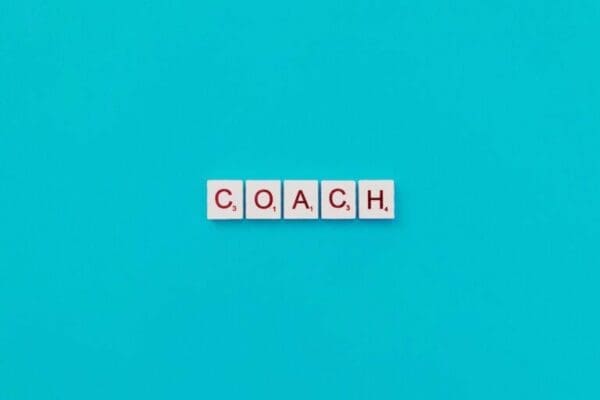A Universal Secret Art of Sharing Knowledge
What is a coaching conversation? Coaching Conversation is a great method of sharing knowledge, ideas, experiences, or problem-solving through dialogue. It is a very powerful way that is used by a lot of professionals in their field to help others develop their capabilities to be the best version of themselves.
It’s all about leadership skills.’
By using the right approach, you can always use this tool to bring a positive impact to any institution or organisation where you want to contribute to making a better change.
You can turn your experiences into something more valuable by helping people get more learning opportunities, reinforce their strengths and capabilities, or be more than what they thought they were.
It always becomes an amasing thing to have this power to change people’s perceptions about who they are, what they can do, or what they can achieve. And you are there as the one who guides them.
Let’s see what coaching itself means.
What is Coaching?

What comes to your mind when you hear the word coaching? It will mostly represent some professions, such as teacher, mentor, consultant, or therapist. All of them are professionals who will help people get more knowledge about how to deal with their current situation using the best method that has already been approved as the most effective and efficient way to use. And that’s what we are talking about here.
Every successful coaching conversation needs to have a specific goal and a clear action plan. You need to make the whole session well-organised to get the result you want. Luckily, you can find these useful tips here. So keep reading!
What Are the 5 Types of Coaching Conversation

Coaching is a very great tool. Nowadays, most leaders use this tool to create a powerful motivated team that works towards a common goal. The trend is to engage with their team and unlock a great performance through asking and involving rather than just “commanding” or “telling.”
So far we are clear on the importance of coaching conversations in institutional or organisational life. Now, it is time to get a deeper understanding of the types of coaching conversations.
#1 – Explaining

When you start your coaching conversation, make sure that you are aware of your conversation’s goals, your own assumptions, and your beliefs. Then you need to know how these things might influence your conversation process.
As an expert, you will normally begin a conversation believing you understand the whole problem and have a possible solution for it. And you might be right. But you need to be careful about your own assumptions and pay attention to what information you can get that can change your mind about how to approach the situation.
Keep in mind the person’s points of view. The picture, situation, or condition you see in your mind at the moment probably won’t have the same perception as what the other person could conclude. Two people can look at the same picture, and they can have different views of perception about how to draw conclusions about it.
This idea of perception will help you easily understand other people’s points of view. Remember that what is easy to understand for you might be difficult to understand or receive from someone else.
You also need to put to your attention that the person you have a conversation with might know or might not know where the problem is, what mistake they could have made, or even what matters can be discussed with you. It could be a tough conversation for you if you only use your own assumptions to judge the topic from its surface. Generally, there are elements of a great coaching conversation that can help you in the process.
#2 – Exploring

Knowing how to continue the conversation to the next level smoothly is one of the important skills you need to have in a coaching conversation. It’s not easy to start a deeper conversation with people. This is especially when you need to explore more useful data for your conversation purpose.
There are some techniques to get information through conversation. However, the most effective way is by asking deeper questions.
Asking deeper questions:
Asking questions is a unique way of unlocking information. But be sure to keep your conversation away from feeling like an interrogation session. The purpose of this step is to build trust and obtain the desired information without the listener noticing.
For some people, making a list of questions and getting a detailed answer from someone seems to come easily to their mind. But most of us need time to set proper questions to get all the good information that we need for our coaching conversation purpose.
How to ask better questions:
To ask better questions, you need to make a clear and concise list. Your questions need to be on a structured base that can encourage and guide people to give positive responses.
Start with “what”, “how” and “why” when you want to get specific detailed information from your questions. Allow the person to explain themselves more, and avoid direct questions which require only “yes” or “no” answers.
In this exploring session, you need to keep listening to every piece of information you gather. It helps you identify the real problem and find the best possible solution for it. You need to practice the art of listening, let the information flow as far as it can, quiet your mind, and listen carefully without making any judgments. Ignoring the last tip will only create a gap for the next information to be released and automatically lead to an awkward moment.
#3 – Encouraging

A coaching conversation without a tactical plan is like driving without a light. So, you need to make sure that you have a clear agenda and an action plan to follow.
Now that you have all the information you need, it’s time to take the next step, which is to share ideas, experiences, and even problem-solving methods in the best way you can.
The encouraging step is the most important part of a coaching conversation. Because once you succeed here, then we can say you will succeed in all the other steps.
Now that you have all the information, you can analyse it and decide which one you want to use in this encouraging session. As an expert or person with more experience, it is usually easy for you to see the weaknesses of the person you talk with. However, you need to avoid being negative and stop finding fault for the wrong things they did in the past.
Although all the material is already in your head, first you need to focus on something that can encourage people to feel better about themselves. Be sincere and honest with what you say. People usually know the difference between a genuine act and a flattery one. In this way, they will feel motivated about their selves and be open-minded about anything else that can improve their capabilities.
Build a good relationship:
At this moment, you can focus on how to develop a strong and positive relationship. Try to avoid using general cliches when you are encouraging. These are like “everything is going to be okay” or “all is well.” They are only effective in the short term, but you need something in the long term. So be specific with what words you are going to use in this encouraging session.
Be sure that in an encouraging session, you are not only focusing on what message you want to use but also analysing what message the person is trying to distribute to you. You need to identify the real meaning or emotion hidden behind the person’s words while he told you his or her stories.
Learn everything from the gestures, posture, and facial expressions that they show you. Try to collect as much information as you can. Then adopt and use the same language preference that the person uses, so it will be easier for them to understand what you are trying to say. In the end, it will increase the quality of the results you want to achieve.
#4 – Empowering

To achieve shared goals, every good leader needs to practice empowering others. It is always a good thing to give someone authority over their life, their work, and their decision. This will build confidentiality, and in the long term, people will feel motivated and inspired to do their best in every situation.
While empowerment has a great impact on building people’s responsibility toward their lives, you need to avoid making them feel uneasy or exhausted toward the challenge that you create for them.
The goal of empowering others is to facilitate the permission of authority so they can solve their problems by using their own methodology. In the long term, this kind of empowerment can increase productivity. However, it is essential to pay attention, monitor the person’s performance from time to time, and make any necessary adjustments when they are needed.
Let them take control:
To have an effective coaching conversation, remember that in this empowering phase, it’s important to allow them to have a chance to take control over every decision that they want to take to use the solution they already have from their own experiences or based on suggestions from a coach.
There are always risks and room for failure, but this is not about fixing a person. This is about having a good progression from time to time. You can keep monitoring and evaluating, keep sharing, and keep giving feedback. This is always a great idea to ensure the growth of mindset, and finally, it will increase the possibility of getting the outcome that you want from the coach’s perception.
#5 – Elevating

As we develop a coaching conversation understanding, the possibility of having various models, types, and elements for the perfect approach to this conversation goal will also develop.
As more and more people increase their awareness of this skill, they will keep searching for ways to do it better. Then the interactions will become more effective and efficient.
People will try their best to improve and cross the barriers. We know this theory won’t be easy to put into practice, but once you get used to it and you trust that you can create more impact on others, then you can go to the next step called elevating others.
It is very interesting to guide people through coaching conversations and elevating them. To tell them that they are not only capable of passing and solving their current problem but that they also can serve a bigger purpose and a bigger goal than what they face currently.
Make them trust you if they have those powers inside themselves and learn how to use them. All they need to do is focus on their abilities, analyse the possibilities and opportunities around them, and then set an intention for them. It sounds simple. But yes, it can be simple as that.
Inner self-awareness:
Elevating others can start with developing inner self-awareness. Make them realise what inner power they’ve got, and they can accomplish something bigger than what they think in the future.
Of course, there will be some steps to take, some follow-up to do, and some things to focus on. But it’s all within their capability. So yes, they can do it.
As a coach, of course, several times you will see and realise in your mind not all of them can be elevated. Your mind is probably screaming out loud about the impossibility of doing this phase for certain people. But yet, you need to avoid being negative and remember that everyone has a chance to do something big, even when both of you don’t believe it at the current moment.
But history keeps repeating what we know when you think you can convince yourself to do it and make other people think they can do it. Then mostly it can be done.
How Do You Structure a Coaching Conversation?
Ideally, a good coaching conversation will consist of four basic structures:
Step 1: Identify the Goal of the Conversation
In this step, you need to make sure you can control your objectives and preferences for this conversation. Make sure to get engaged in a discussion pattern and not a lecture pattern.
Step 2: Listen
Keep reminding yourself that you need to practice the art of listening. It will bring you closer to creating the great quality result that you want to achieve from this conversation.
Step 3: Ask the Right Questions
As informed above, it is important to provide time before the actual coaching conversation session and create a list of questions that will help you get the appropriate answer you need faster and more accurately.
You can view the list below for some good question topics that you can use for your coaching conversation.
Step 4: Be Flexible
You might not get what you need on the first try but don’t worry about it because it is normal. All you can do is become flexible; keep trying and learning how to pursue the topic and expand your conversation to the next area of discussion if you need to.
Step 5: Activities
Sometimes you need to be brave to push the boundaries of a conversation. Almost everything is legal to get the conversation goals. Things that you can do to input more activities in your conversation session can create some easy games using pictures (this is what the therapist did.) You can also move the boring session from offline to online (sometimes this will create a more fun session). Additionally, you can choose a movie to watch together, where there’s a character that’s similar to the one you have for this activity.
There are many kinds of activities; you just need to explore them and decide which ones to use or which ones will work for your coaching session.
A Key to a Great Business

Organisational culture is sometimes described as a key to a great business. So, developing organisational culture will directly affect the company’s performance itself.
As a manager at your organisation, you’ve probably thought about what organisational culture you can build that will bring exceptional value to your company. And, how if we told you about one universal secret that will surely help you?
Interested? Then it would be best if you kept reading.
Every company has a culture that is special and vital. It represents the core value that the company tried to focus on. Investing in it is as important as investing in a leadership program where team members can engage and feel the company’s support. Because it works like a business engine, this internal process will finally lead to a significant contribution to business success.
How can you participate? What secret are we trying to reveal here? The answer is a coaching conversation program. A coaching conversation is one of a few great ways to significantly improve employee performance, employee engagement, job satisfaction, and team collaboration.
The Importance of Adopting a Coaching Culture
A coaching conversation is a very powerful tool for developing transformational leadership skills. You don’t need to be a trained HR manager to hold a powerful coaching conversation. All you need to do is develop your ability to actively listen, analyse the employee’s perception, and use your own experience to help create a problem-solving approach.
Today, many organisations focus on creating a coaching culture. They realise it can help empower, encourage, and teach their employees through an open discussion without including much costs or expenses for it. But if it is done correctly, it can lead to the peak of their company’s success.
How a Manager Can Use Coaching Conversations

All effective and efficient coaching conversations start with asking questions and practising the art of listening. Every manager needs to practice a two-way conversation, not a lecture or an interrogation conversation type.
Spend more time listening, and showing your interest in the employee stories, build their confidence first, and then later you can get almost whatever information you need as the fuel for your problem-solving ideas.
Many methods can be used by a manager to coach their employees. The first is the formal way, by using one-to-one closed conversation. In this type of coaching, a manager will provide a special time and place and then invite an employee to join this activity as part of a formal company program.
The second one is the informal way. In this type of coaching, a manager will directly come to the area of their employee’s work and do a conversation with them. It represents the whole meaning of informal and sometimes it is more fun than the formal way.
Now we want to recommend three elements that you need to pay attention to and practice in your coaching conversations. These are keys to a successful coaching conversation.
Ask ‘Right Questions’

For every coaching conversation, make sure you have prepared a list of questions. You can either memorise them or put them on paper.
– “What part are you most excited about in your job right now?”
– “How does it make you feel?”
You can start your question session with some easy questions, that will create a good introduction for the whole conversation.
– “How does your co-worker make you feel?”
– “Is there any other position in the company that can make you feel greater now?”
Then you can go with some deeper questions
We suggest not directly asking about the problem. But try to give some trick questions. It will provide more confidence for the employee to answer your question.
You need to remember that many employees are afraid to speak up. So, it’s important to build some psychological safety situation where the employee will feel comfortable sharing information with you. In some situations, you need to show your respect and support toward the employee’s answers.
– “Yeah, you are right with that part.”
– “I also have a similar experience with this matter.”
Make them participate more in the conversation, build trust, and allow them to speak more and even tell a story to you.
– “That’s interesting. Can you tell me more about it?”
– “What do you think, if I say I agree with you and yes, we can do it? It would be great if you could describe more about it.”
Coach the ‘Person’

It is absolutely normal when you first identify what the problem is or the topic of your conversation with the employee, and then you feel something like it seems too easy. And have some thoughts like, how could they have not figured it out?
To practice an effective coaching conversation. You need to learn to move away from this kind of tendency. Instead, stay curious about the possibility of another problem deeper than its surface.
Some problems, don’t show themselves easily. In most cases, the employee hides the real problem they faced because of some cliche reasons, such as they are in fear of criticism or judgment.
So, dive deep.
– “What do you suggest for a better way to do this job?”
– “Why don’t we try this one. It will be fun. I think so. What do you think?”
– “People have become too much individualistic nowadays. I kind of hate it. Can you tell me if I am one of them or not? Don’t worry, I’m just curious about my own self.”
What you need to do here, is try to stick your own opinion into their heads without them even realising it and make them think if they have it first. It is fun when you get used to it. However, it is usually hard at the beginning.
Make an Action Plan

This is the most important thing about your coaching conversation. Make an action plan. You can measure your conversation performance through these SMART goals.
1. Specific – What exactly will they do to address it?
You need to put this information first and let them feel the authority to make decisions about what they can do to solve their current problem or deal with their current situation. Prepare some detailed checklists, and you can watch the progression and then make the necessary adjustments once it is needed.
2. Measurable – What will be looked at to ensure progress is being made?
It usually will be measurable by looking at the employee’s job description, and noticing how much they can do. Then compare it with what they did before the coaching conversation program.
3. Attainable – Can they do this within a reasonable time frame?
You need to set up a timeline, so you know when to do the next coaching conversation program with the employee to evaluate all the progress.
4. Relevant – Is it something that aligns with their method of operating and values?
Be honest and sincere. Sometimes your first method didn’t really work, and that’s why we need to evaluate and do the next coaching conversation to analyse what was wrong with it.
5. Time-based – Set a date to achieve and touch base
Be clear about the time frame. Checklists will absolutely help in this matter. Some progressions are easy to see, but others are hard to measure.
Important to note: at the end of each session, you need to summarise what you get on that day and inform the employee about what you want to achieve in the next session.
You can also inform all the positive things that happened during the session that made you happy. Remember to focus only on positive things. You don’t need to bring up the parts that you don’t like or negative information. Keep all of them to yourself, and make sure to only share the good ones.
Informing something positive about their performance will make them feel good and develop their confidence. Moreover, it’s beneficial for both of you because it strengthens your relationship.
However, even if you say all the positive things and keep the opposite ones with you, you still need to find the best way to handle these other things. Choose the right strategy and implement it in the next session of your coaching conversation.
Action: For even more useful content on coaching, check out our ultimate guide on Coaching Skills.
I hope you found this article useful. Here’s a reminder to follow us on Facebook.




